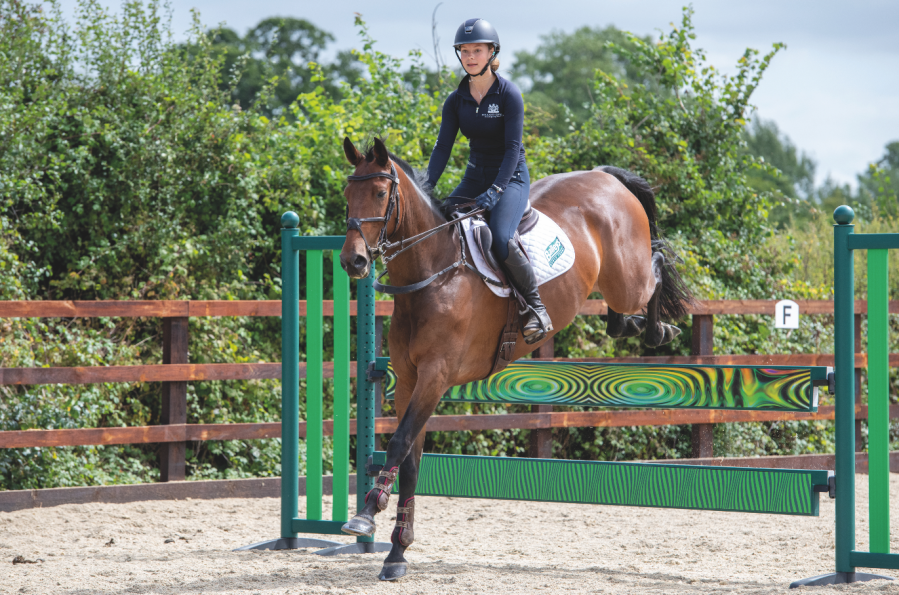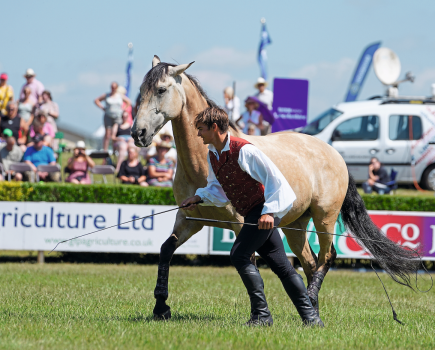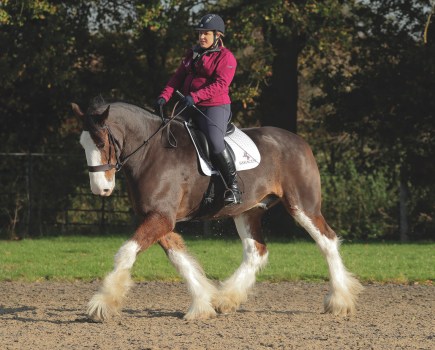Do vertical showjumps and upright fences spell a four-fault guarantee for you and your horse? Whether they’re 60cm or 1.60m, it’s easy to have upright fences such as planks down during a jumping round. And at four penalties a time, it’s an expensive way to mar an otherwise clear round and potentially drop down the leaderboard. From a tactical warm-up routine to smart use of groundlines, there are plenty of things you can do to nail jumping upright fences and vertical showjumps once and for all.
According to Lincolnshire-based international showjumper Samantha Staples, there are several common causes of knocking upright fences down. From struggling to find a good canter rhythm to getting to close and poor rider position — the good news is all of these issues can be fixed with good training.
Vertical showjumps: find a good rhythm
Verticals need to be jumped in a short, energetic canter and, when asked to produce this, riders often do one of two things — rely on the hand to shorten the canter or mistake speed for power, resulting in a long, flat pace.
“To fix this, you need to produce a canter in which your horse feels light in the hand while powering themselves along from their hindquarters and, crucially, nothing should change on your approach to the fence,” says Samantha.
“You can achieve this with simple polework. Begin with one randomly placed pole and, once the canter feels bouncy and your horse is soft and consistent to it, add a second and third pole each at one bounce stride (roughly three paces) from the preceding pole. Aim to feel the same bouncy rhythm over the poles and practise bringing the horse back with your seat if they get too long or exuberant.”
Jumping upright fences: avoid a deep take-off spot
Unlike oxers, vertical fences naturally draw you in to a deeper take-off spot, but appropriately placed groundlines can help teach your horse to stand off an upright for better clearance in front.
“Next time you train over vertical showjumps, pull the ground pole out by two feet (60cm),” advises Samantha. “Once your horse is meeting the upright fence comfortably and rhythmically, gradually return the ground pole to the base of the fence.”
Tackle vertical showjumps with confidence
Whether you’re faced with planks on a showjumping course or an upright gate on a cross-country track, vertical fences can trigger a wobble of confidence in riders.
“We all feel nervous in the saddle at some point and it stops us riding how we know we should. The most common sign is tightening up in the hand, so I’d recommend practice of achieving a quality rhythm to reduce reliance on your rein aids,” says Samantha. “Then, build a small plank fence with a pole as the top rail to help normalise jumping them. When you’re confident, replace the top pole for a plank and focus on sitting up, staying relaxed and using your seat to keep that bouncy canter rhythm.”
Check your position
“Rider position is very influential when you’re jumping, especially upright fences. Remember that canter rhythm can be lost if you tip forward, which encourages your horse onto their forehand. Keeping your shoulders back and looking up will help,” says Samantha.
Working preferably with your trainer, but a knowledgeable helper taking a video would do, analyse your own and your horse’s form over upright fences such as planks. This will help you to identify what you need to do in order to improve. Samantha suggests looking for any changes in your horse’s rhythm or your body and aids on the approach to vertical showjumps, such as:
- Are you tight in the hand or tipping forward?
- Is the canter getting long and flat?
- Is your horse taking off too close to the fence, or do they just not seem to be picking up their feet?
“Once you’ve isolated the issue, you can start doing the work to correct it,” says Samantha.
Consider your horse’s technique
If you or your instructor don’t notice any change in your horse’s way of going after a thorough assessment, it might be time to work on their technique.
“You can test a horse’s technique by using a placing pole one horse stride from the base of the planks to aid your horse’s rhythm and pinpoint the perfect take-off spot,” explains Samantha. “If they still have it down, placing V-poles on the top plank offers a visual aid that helps improve concentration, straightness, carefulness and use of the shoulder.”










